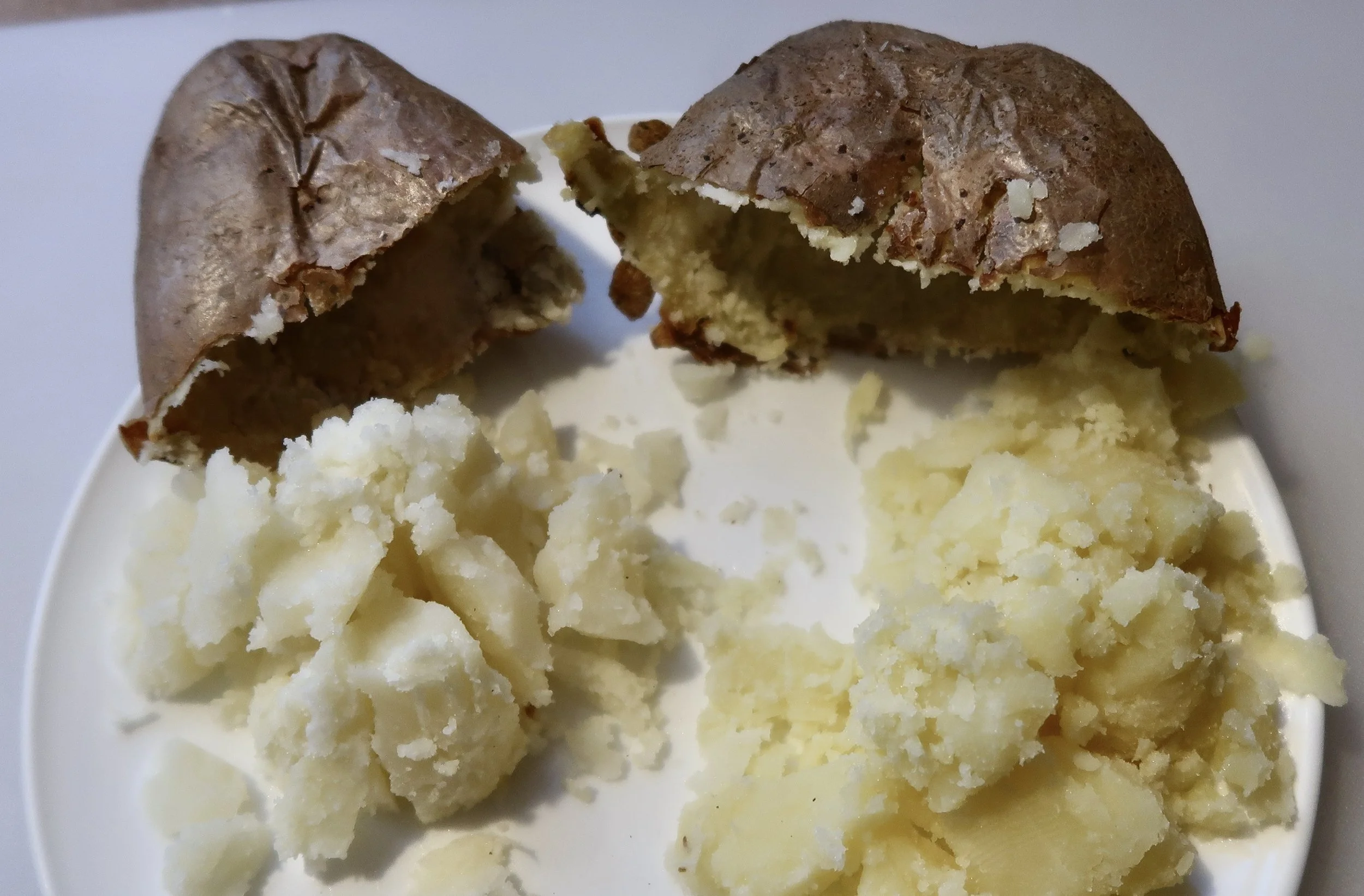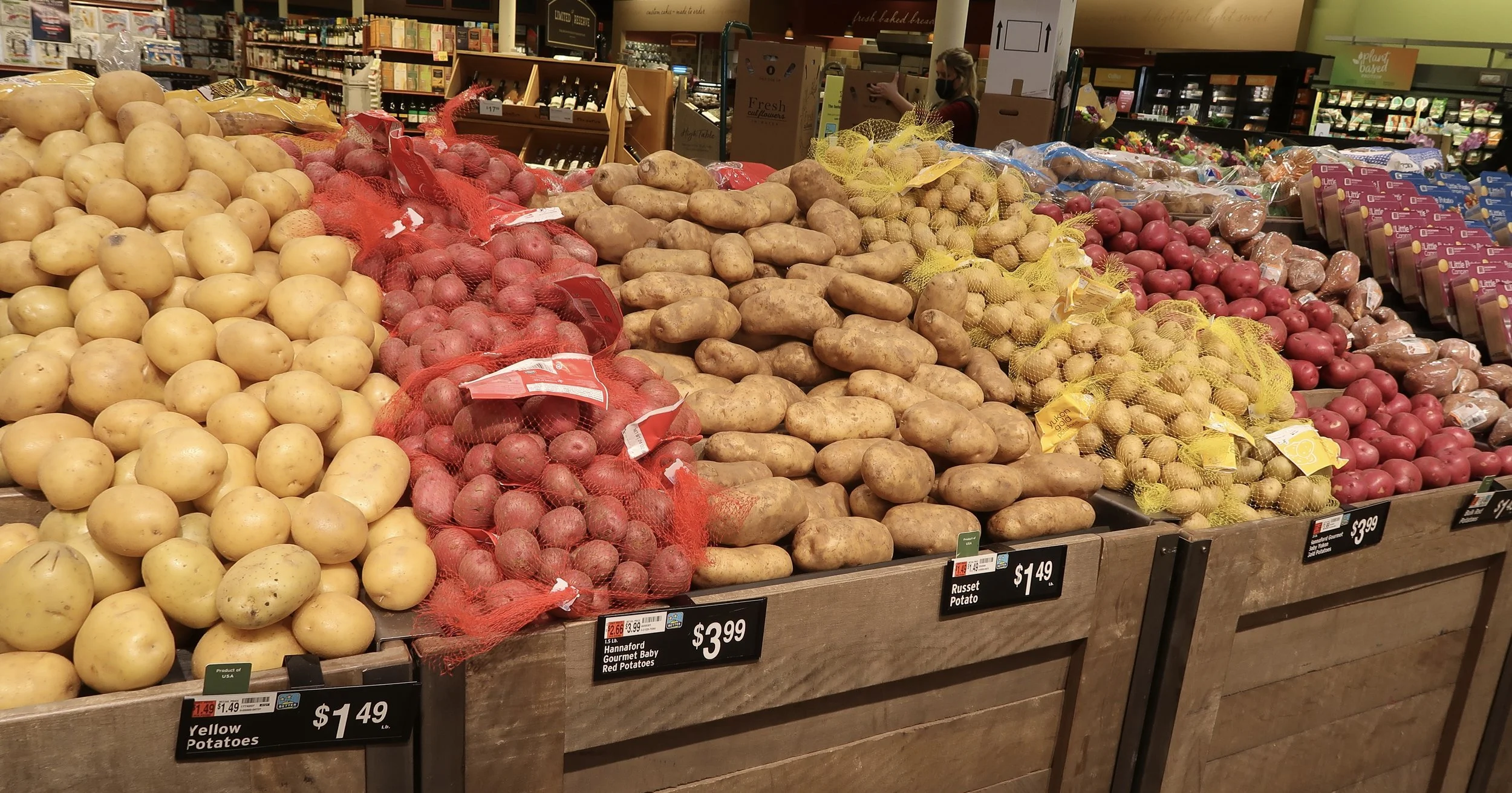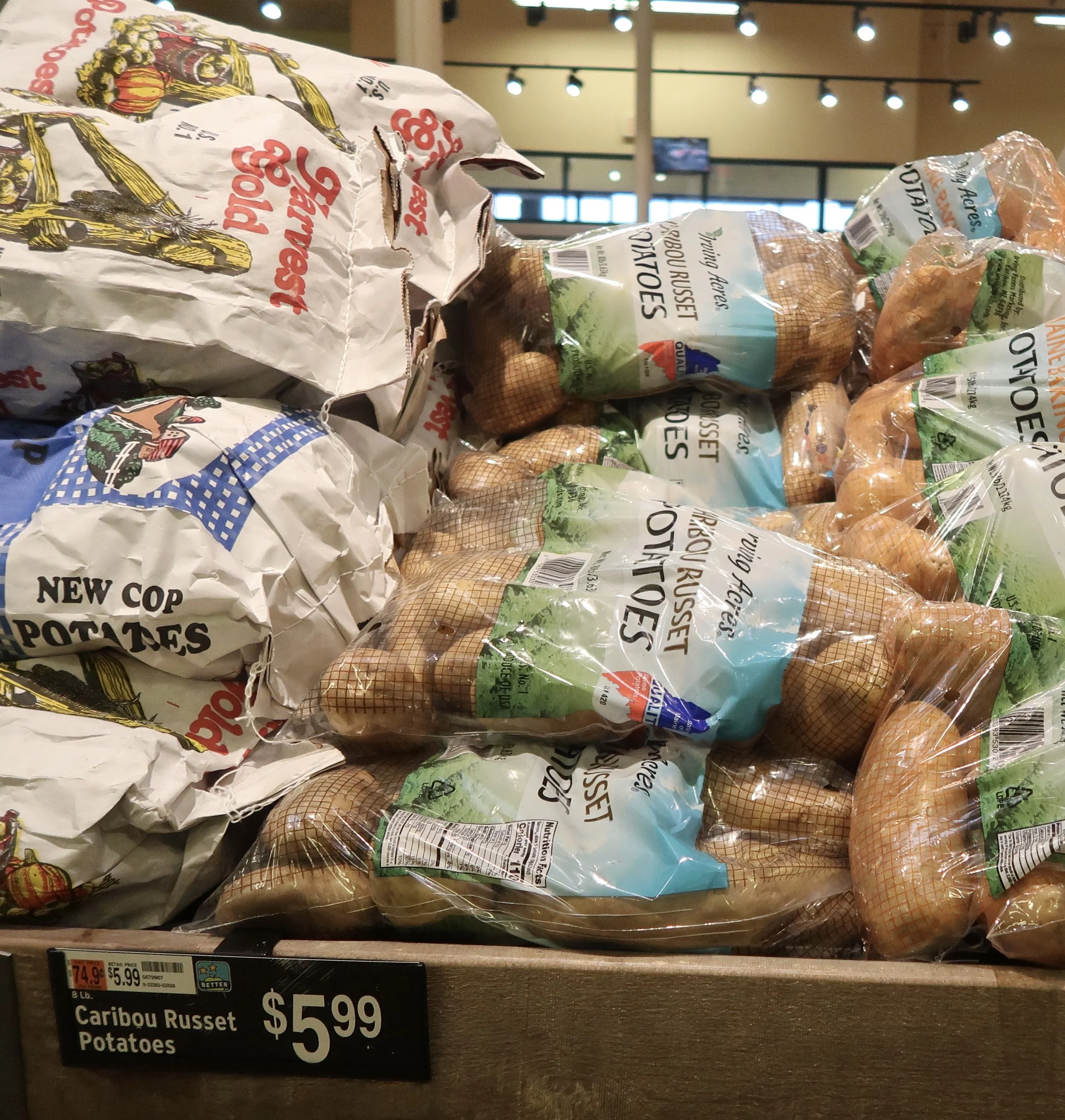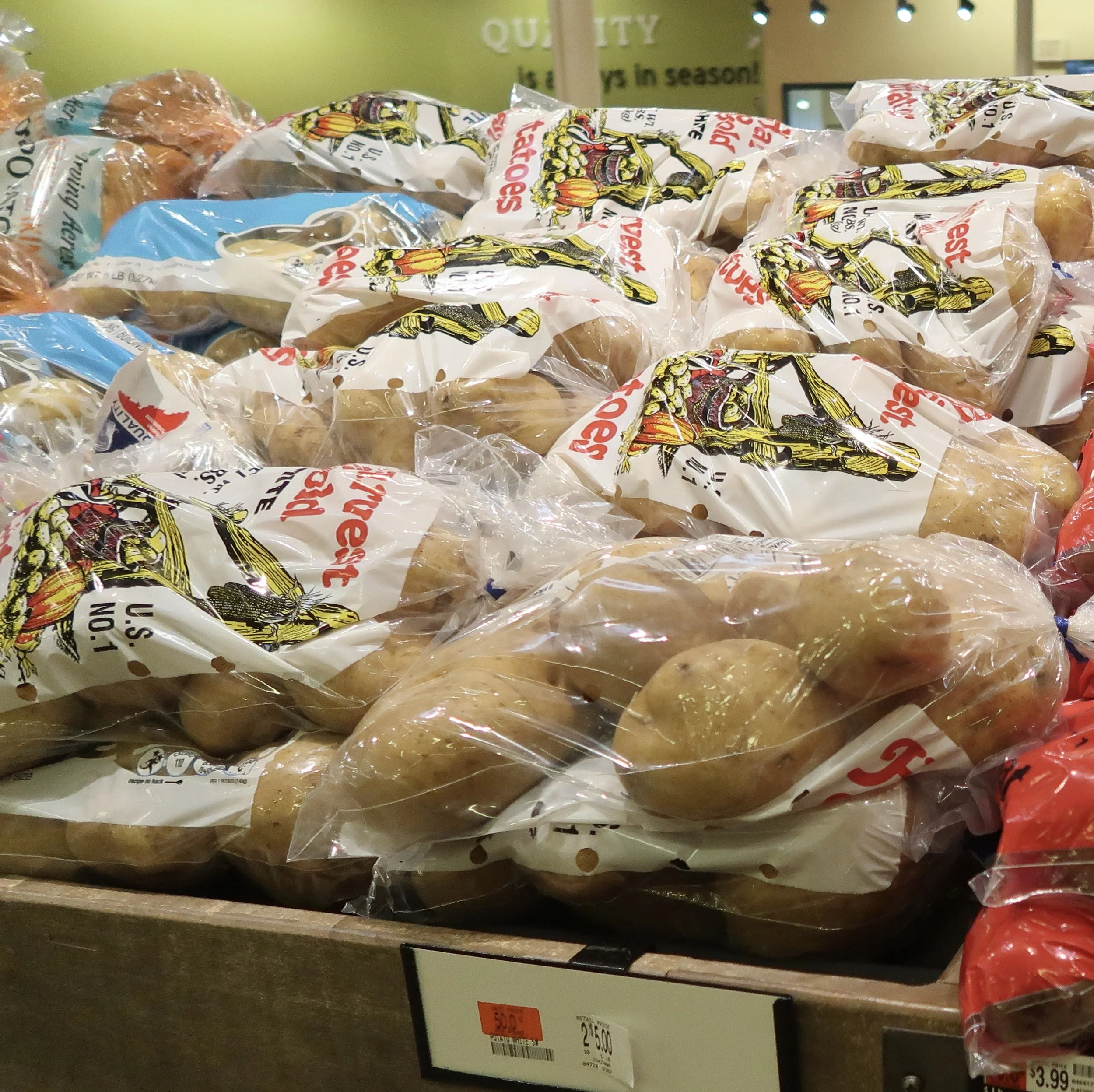Can the Crispy Skin of a Caribou Russet Beat a Round White?
Baked Caribou Russet, left; unidentified Round White, right.
Although long, thin russets are considered THE potatoes to bake (thanks to Idaho’s ad campaigns), years ago some baked potato connoisseurs used to prefer the rounder, white varieties like the Superior or Green Mountain. For people who ate baked potato skins, round potato skins couldn’t be matched for crispiness and flavor. Russet skins were limp with no crunch.
Decades later, more varieties of russets have been developed—some by the University of Maine. Could a round variety still stand the crispy test?
I began my investigastion at the nearby Hannaford Supermarket.
In the bulk bins, I only found yellow and red potatoes, and russets. Only after I turned the corner did I spy bagged displays of more reds, yellows, russets for baking and russets for boiling and frying, and finally, at the end of the aisle, bags of “white” potatoes, the traditional Irish relations which no longer, it seems, are considered good for baking.
Irving Farms Inc. of Caribou supplies Hannaford stores in Maine with their brand of Caribou Russet Potatoes.
Facebook friends were raving about the Caribou Russet variety which was developed by the University of Maine and first available to commercial growers in 2015. It may have been named after the most northern city in Maine. Since then, acreage has increased dramatically, in Maine anyway, and grocery chains in Eastern US now frequently feature them.
Harvest Gold “White” potatoes grown by Thomas Farms in Corinth.
Along with an eight-pound bag of Caribous, I purchased a five pound bag of an unknown round white variety grown in Corinth. I found found that the brands of large, round white spuds in grocery stores vary significantly from week to week, season to season. The week of my test, Harvest Gold was the only brand in the store that carried round white potatoes.
Small bruises, cuts, or rot can easily be trimmed by using a paring knife
At home, after preheating my oven to 450 F., I prepared one russet and one round white of roughly equal size. I washed them under running water, cut off any bruises or rotten scars, and pierced the skins several times (up to 1/4 inch deep) to prevent possible explosions in the oven which would send flaky potato flesh flying—a mess to clean up. (This could happen if no holes are made in the skins for heat to escape.)
Unknown round white, left; Caribou Russet, right
I then spaced the spuds apart inside the oven and set a timer for one hour. Before the last 15 minutes, I checked for doneness by inserting a table fork into each potato to see how far the fork could go. If there was resistance to the entire fork head disappearing into the potato, I knew more time was needed for baking. If the tongs of the fork easily went into the spud, I knew the potato was done.
This potato needs a little more baking
After one hour, both spuds were ready. Being careful not to touch their hot skins with bare fingers, I forked them from the oven and onto a dinner plate.
And now for the test: Which potato skin would be crispier?
I found that the unknown white variety’s skin was somewhat more crispy immediately after baking than the russet, although the russet skin was still quite crispy—much more than some older russet varieties. As for flavor—a toss up. The Caribou Russet just might have had a slightly better flavor—both the skin and flesh—than the round white. But it was close. Crispy skin lovers would be happy with either potato.
As one friend who participated in the taste and crispy case noted, “I’ve never liked a russet skin baked. This is the first russet I’ve ever eaten that I really enjoyed.”
And would a more notable round white variety be any more tastier than the new Caribou Russet?
That’s a case yet to be solved, once I find a round white variety meeting expectations—like the Superior, a flavorful round white developed in 1960—or some newer variety I’ve yet to encounter.
Is the Superior obsolete? No, but it isn’t grown as much in Maine any more. Hardly any garden seed catalogs carry that variety, and commercial acreage, due to less customer demand, is way down from decades ago when Maine farmers grew more potatoes for the fresh markets than they do now for french fry companies.
The hunt, however, is on.






